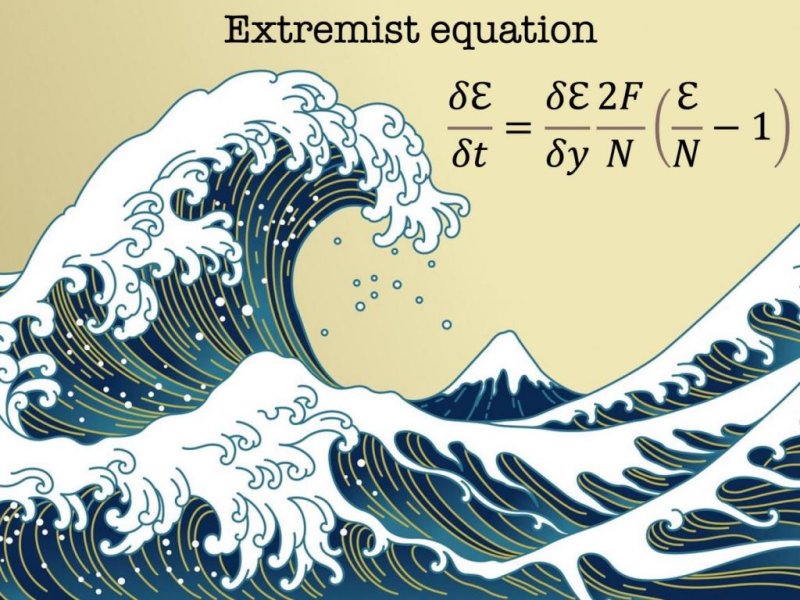Study: Online support for extremist groups Boogaloo, IS evolved in similar ways

A mathematical equation can help explain how extremist movements evolve on the Internet, and researchers say it could help to limit how groups as diverse as the Boogaloos and IS grow. Photo by Neil Johnson/George Washington University
May 19 (UPI) -- New analysis suggests online support for extremists groups, including the Boogaloos and the Islamic State, or IS, emerges and evolves in similar ways.
For the study, published Wednesday in the journal Scientific Reports, scientists looked at the mathematical patterns that defined early support for the Boogaloos, a far right group implicated in the storming of the U.S. Capitol in January.
Scientists found online support for the Boogaloos looked like a lot like the emergence of IS.
"This study helps provide a better understanding of the emergence of extremist movements in the U.S. and worldwide," lead author Neil Johnson, professor of physics at George Washington University, said in a news release.

A mathematical equation can help explain how extremist movements evolve on the Internet, and researchers say it could help to limit how groups as diverse as the Boogaloos and IS grow. Photo by Neil Johnson/George Washington University
May 19 (UPI) -- New analysis suggests online support for extremists groups, including the Boogaloos and the Islamic State, or IS, emerges and evolves in similar ways.
For the study, published Wednesday in the journal Scientific Reports, scientists looked at the mathematical patterns that defined early support for the Boogaloos, a far right group implicated in the storming of the U.S. Capitol in January.
Scientists found online support for the Boogaloos looked like a lot like the emergence of IS.
"This study helps provide a better understanding of the emergence of extremist movements in the U.S. and worldwide," lead author Neil Johnson, professor of physics at George Washington University, said in a news release.
RELATED Researchers offer nuanced method of studying climate-society interactions
"By identifying hidden common patterns in what seem to be completely unrelated movements, topped with a rigorous mathematical description of how they develop, our findings could help social media platforms disrupt the growth of such extremist groups," Johnson said.
The Boogaloos are an extremist libertarian group that describes itself as a "militia." The anti-government group claims to be preparing for a civil war. Factions of the movement also subscribe to white supremacist and neo-Nazi ideology.
By contrast, members of IS, which has been categorized as a terrorist organization by the U.S. government, advocate for a radicalized form of Islamic theocracy. The group is responsible for dozens of violent terrorist attacks across the globe.
RELATED For more equitable cities, researchers say to keep social networks intact
Despite their differences in ideology and origins, the evolution of online support for the two groups followed the same shockwave mathematical equation.
Because online extremism can manifest itself in real world violence, some policy makers suggest more must be done to curb the growth of extremist groups on social media platforms.
Traditionally, social media companies have tried to limit the growth of extremist groups through aggressive content moderation and the promotion of users providing counter messaging, but the authors of the latest study suggest these methods have significant limitations.
RELATED Technology, social media help law enforcement track down Capitol rioters
The good news, researchers say, is that because the growth of online extremism follows uniform patterns, a one-size-fits-most approach -- if well-designed -- could be used to thwart all sorts of extremist groups.
"One key aspect we identified is how these extremist groups assemble and combine into communities, a quality we call their 'collective chemistry'," said study co-author Yonatan Lupu, an associate professor of political science at George Washington.
"Despite the sociological and ideological differences in these groups, they share a similar collective chemistry in terms of how communities grow. This knowledge is key to identifying how to slow them down or even prevent them from forming in the first place," Lupu said.
upi.com/7097155
No comments:
Post a Comment